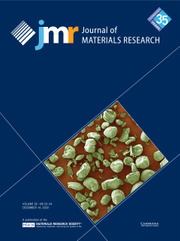Crossref Citations
This article has been cited by the following publications. This list is generated based on data provided by Crossref.
Amorsolo, Alberto V.
Funkenbusch, Paul D.
and
Kadin, Alan M.
1999.
Modeling of the surface roughness of thin TiSi2 films at the point of rupture.
Materials Science and Engineering: B,
Vol. 57,
Issue. 3,
p.
186.

